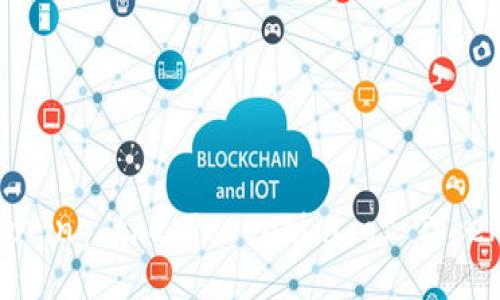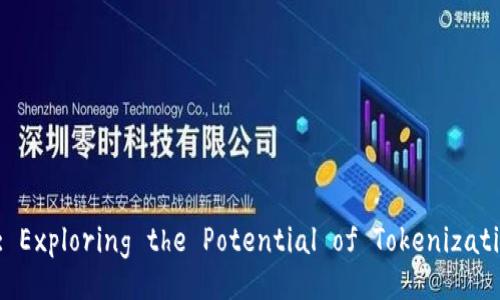In recent years, the digitization of assets has sparked a revolution across various sectors of the economy, leading to the rise of tokenization. Tokenization refers to the process of converting rights to an asset into a digital token on a blockchain. This transformation has opened pathways for new business models, enhanced transparency, and improved access to financial systems. In this article, we will explore the potential of tokenization, delineate its benefits, and answer six relevant questions that delve deeper into this multi-faceted topic.
Tokenization has emerged as a significant trend in the digital economy, fueled by advancements in blockchain technology. Blockchain—the backbone of cryptocurrencies—provides a decentralized, transparent, and secure platform for data management. Tokenization allows real-world assets, such as property, commodities, and even intellectual property rights, to be represented as digital tokens on a blockchain. This representation not only makes trading easier but also paves the way for fractional ownership, democratizing access to investments that were previously restricted to affluent individuals.
Moreover, tokenization isn't limited to traditional assets. It has evolved to encompass various innovative applications such as non-fungible tokens (NFTs), which represent unique digital items and have gained popularity in the realms of art and entertainment. This technological leap has led to an investment surge in digital assets, with the global tokenization market predicted to expand exponentially in the coming years.

The benefits of tokenization are vast and transformative, impacting various industries:
Tokenization can be broadly classified into three categories: asset tokenization, utility tokenization, and security tokenization. Each type serves different purposes and is tailored to various use cases.
Asset Tokenization: This involves representing physical assets, like real estate or artwork, as digital tokens on a blockchain. The registered tokens represent ownership shares or rights, allowing multiple stakeholders to invest in high-value assets. With asset tokenization, properties can be sold in fractions, making real estate investment more accessible than ever before.
Utility Tokenization: Utility tokens are designed to provide access to a specific service or product within a blockchain ecosystem. Companies may issue utility tokens during initial coin offerings (ICOs) to raise capital for their projects. Unlike asset tokens, utility tokens are not necessarily linked to a specific asset's value and are primarily used for payments for services provided on the network.
Security Tokenization: Security tokens are digital representations of ownership in a traditional asset, such as equity in a company or profit-sharing agreements. Security tokens are often subject to securities regulations, which imply that they provide investors with rights similar to those of traditional securities, enhancing their legitimacy and security.

Tokenization is poised to disrupt traditional financial systems substantially. For centuries, banks and financial institutions have played crucial roles in asset management and transfer, often acting as intermediaries to facilitate transactions. However, with the advent of blockchain and tokenization, the traditional paradigm of these institutions is being challenged.
First, the concept of decentralized finance (DeFi) has introduced financial services that operate without traditional intermediaries. Users can lend, borrow, trade, and earn interest on their assets directly via smart contracts. This eliminates the need for banks and financial institutions, creating a peer-to-peer financial ecosystem where users interact directly with one another.
Secondly, tokenization enables faster and more transparent transactions. Blockchain technology can process transactions in real-time and provide transparent records, reducing the potential for fraud and error. Traditional financial systems are often hindered by bureaucracy and paperwork, while tokenized systems streamline these processes significantly.
Moreover, the global nature of blockchain technology fosters a more inclusive financial environment, allowing users from any part of the world to access services without geographical limitations. This can lead to better financial access for populations in underbanked regions, contributing to global economic growth.
While tokenization presents significant advantages, it is not without its challenges. One of the primary obstacles lies in regulatory frameworks, as governments and regulatory authorities scramble to define guidelines around tokenization. The varying regulatory landscapes across different jurisdictions can create confusion and hinder the adoption of tokenized assets.
Additionally, security concerns are paramount. Although blockchain technology is inherently secure, the broader ecosystem is still susceptible to hacks, fraud, and vulnerabilities. Many cases of token theft and loss have been reported, raising questions about the safety of holding digital assets.
Another challenge lies in educating the public about tokenization and blockchain technology. Despite the increasing interest in these innovations, a significant portion of the population remains uninformed about how these systems work, leading to skepticism and potential resistance to adoption.
Finally, the technological infrastructure required to support tokenization may pose a barrier to entry for smaller players. Not all organizations have access to the resources needed to adopt and implement blockchain technology efficiently.
Tokenization is set to revolutionize the investment landscape significantly. With the advent of fractionally-owned tokens, investors can diversify their portfolios by allocating small amounts into high-value assets that were previously out of reach. This shift could lead to a democratization of wealth, allowing a more comprehensive demographic to engage in investment opportunities.
Moreover, the concept of liquidity pools will likely become commonplace. Investors can transact tokenized assets without the delays and costs associated with traditional trading. As the market matures, exchanges may emerge exclusively for trading tokenized assets, increasing accessibility and lowering transaction costs.
Furthermore, tokenization is expected to drive innovation in fundraising. Startups and projects can leverage Security Token Offerings (STOs) to raise capital in a more regulated and secure environment than traditional fundraising methods allow. This offers companies greater security and stability in funding, making capital more accessible.
Finally, the integration of artificial intelligence and machine learning with tokenized assets can lead to improved insights and predictive models for investors. AI could analyze vast amounts of data related to tokenized assets, enabling informed investment decisions.
Tokenization alters the traditional understanding of ownership and rights in several ways. With tokenized assets, ownership becomes represented digitally, making it easier to transfer and manage rights. Digital tokens represent a share of ownership, similar to how shares in a company represent ownership stakes.
Moreover, the use of smart contracts automates rights and obligations between token holders. For instance, tokenized real estate can automatically distribute rental income generated from the property directly to token holders based on the proportion of tokens they own. This level of automation minimizes disputes and enhances trust among stakeholders.
Additionally, tokenization introduces dynamic ownership models. As digitalization persists, the principle of shared ownership may gain traction. This involves several individuals sharing ownership rights of an asset, allowing for collaborative consumption. Users can leverage tokenized assets collectively, enhancing sustainability and resource efficiency.
However, tokenization also raises questions about legal recognition. Jurisdictions worldwide need to clarify the legal status of tokens and the rights associated with them. As tokenization continues to evolve, frameworks for the recognition of ownership and rights must be established to protect users and promote confidence in transactions.
Businesses across various sectors can employ tokenization as a strategic tool for growth. By integrating tokenization into their operations, companies can streamline processes, reduce costs, and innovate their business models.
Firstly, businesses can utilize tokenization for fundraising. Tokenizing equity can provide companies with easy access to capital extricating them from traditional funding constraints. This method allows startups and small businesses to raise funds while offering investors opportunities to participate in the growth of the company.
Moreover, by applying tokenization, companies can create unique customer engagement experiences. Brands can issue loyalty tokens that reward customers for their engagement, providing a novel way to build customer loyalty and improve retention rates.
Another way businesses can benefit is by reducing operational inefficiency through improved transparency and traceability. Tokenization allows for seamless transactions and real-time tracking of assets, leading to reduced fraud and operational costs.
Finally, by adopting tokenization, companies can expand into new markets. The global reach and ease of access to blockchain platforms allow businesses to connect with customers far beyond their geographical boundaries, opening pathways for growth in foreign markets.
In conclusion, tokenization has the potential to revolutionize the digital economy by enhancing liquidity, democratizing access to investments, and providing unprecedented transaction transparency. While challenges remain, the advantages it brings to businesses and individuals are significant, suggesting a future where tokenization becomes a foundational element of economic interaction.